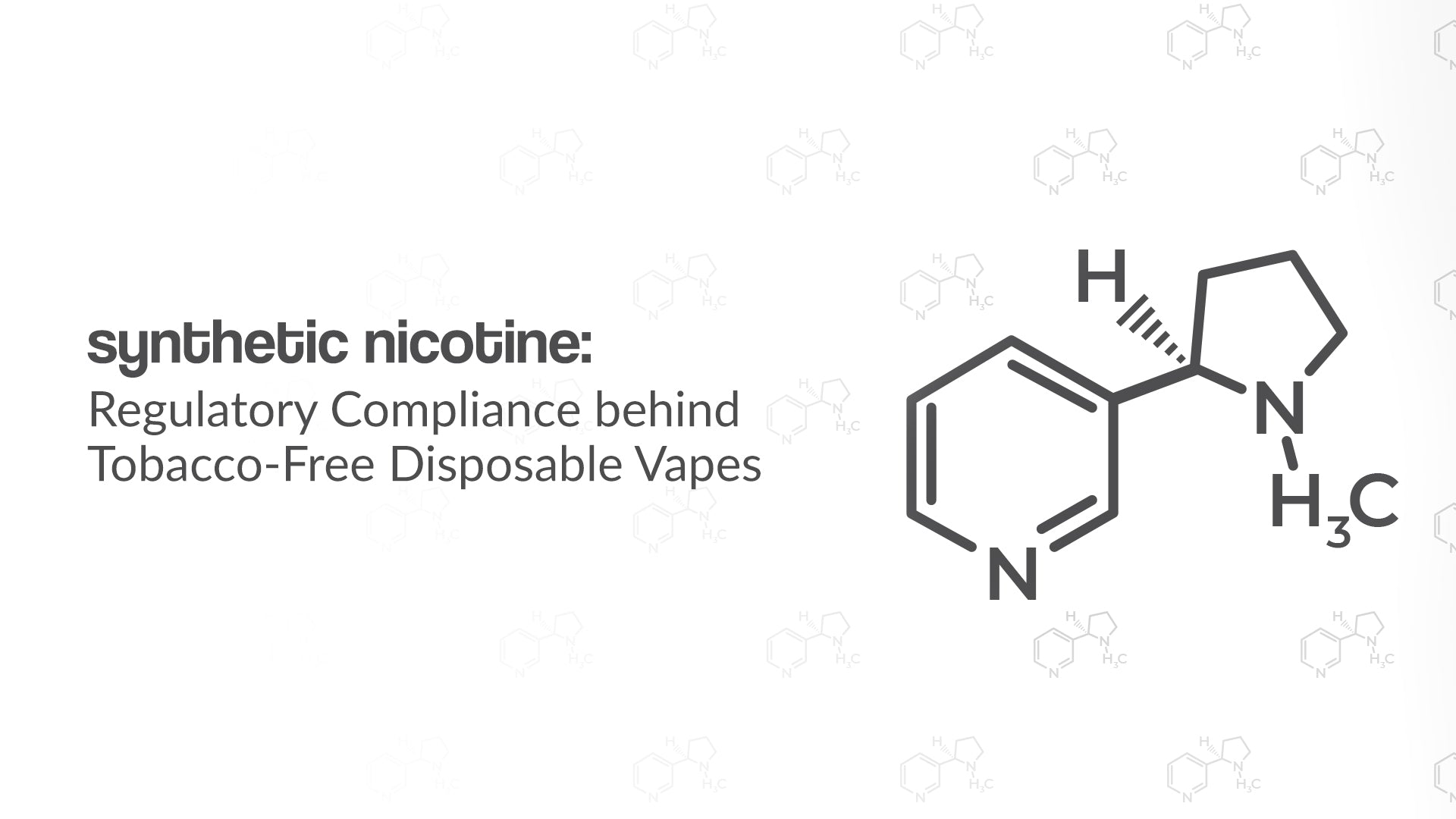Synthetic Nicotine: Regulatory Compliance behind Tobacco-Free Disposable Vapes
In an attempt to appeal to a younger audience and defy FDA regulations, e-cigarette brands have stopped using tobacco in their products and instead have replaced it with a chemical compound known as synthetic nicotine. E-cigarettes containing synthetic nicotine are usually marketed with fancy flavors such as bubble gum, lemon-ice, and candy, which has posed a considerable concern for the FDA in recent years.
What Is Synthetic Nicotine?
Synthetic nicotine is a non-tobacco nicotine that features a similar molecular structure to traditional nicotine without the impurities that natural tobacco carries. It’s known for being tasteless and odorless but is frequently flavored to appeal to a broader audience.
How Is Synthetic Nicotine Made?
Synthetic nicotine is manufactured from a mixture of chemicals in a lab. It’s made without tobacco leaves or natural substances, unlike traditional tobacco.
What Is Synthetic Nicotine Made Of?
There are several chemicals that go into making synthetic nicotine. Most notably, you’ll find sulfuric acid, ethanol, and niacin.
How Long Does Synthetic Nicotine Stay In Your System?
Because synthetic nicotine is so new to the market, it's unknown how long it'll stay in the system. Traditional nicotine stays in the system for 2-10 days, which can complicate blood tests for life insurance policies.
Where Does Nicotine Come From?Traditional nicotine comes from the tobacco plant, which is a plant in the nightshade family. The tobacco plant is known for its thick, furry stem and large leaves with an oval shape.
Why Did Synthetic Nicotine Become Popular?
Synthetic nicotine became popular in an attempt for e-cigarette companies to elude the FDA's restrictions and regulations. Upon recognizing that their flavorful tobacco products were appealing to a younger audience, the FDA demanded that several fruity disposable vaporizer companies halt selling their tobacco-infused products.
The FDA is working tirelessly to crack down on underage vaping. Unfortunately, companies have pivoted to create products containing synthetic nicotine to keep their disposable vaporizers on the markets. With fruity, tasty flavors and marketing that appeals to the younger generation, the FDA has continued with the ongoing investigation to protect tomorrow's youth.
The Problem With Synthetic Nicotine
Synthetic nicotine is a compound made entirely out of harmful chemicals with little research compiled. Furthermore, it was created to bypass the regulations imposed by the FDA and FTC.
In July 2017, the FDA released stricter regulations for tobacco and nicotine in an attempt to limit addictive substances on the market. With synthetic nicotine now becoming more widely available, producers claim that it doesn't have addictive qualities. However, it appeals to a younger audience, and little is known about the long-term effects of the substance. There is a clear regulatory gap with synthetic nicotine that makes it difficult for the FDA to ensure the safety of Americans.
The Federal Trade Commission Orders Reporting
Following the changes to their products, fruity e-cigarette and tobacco-free disposable vaporizer companies are still under fire for their questionable target audience. The Federal Trade Commission (FTC) has gotten involved by ordering five top e-cigarette companies to hand over their sales data from 2019 and 2020.
According to The Hill, JUUL Labs, Reynolds Vapor Company, Fontem US, Logic Technology Development, and NJOY are all ordered to transfer their advertising, sales, and promotional expense information for the FTC to review. Included in said information are the flavors available, product placement, affiliate programs, and college campus programs to crack down on underage marketing.
For some of these brands, handing over this information could be detrimental to their company.
Alarming Statistics
According to the Food and Drug Administration (FDA), a staggering 3.6 million youth in America use e-cigarettes. A quarter of those are high school students. These numbers are causing a health crisis in our country and counteracting the restrictions, regulations, and warnings that the FDA has demanded tobacco companies use over recent decades.
For companies selling vaporizers, responsible market research, marketing, product placement, and reporting must be done to protect youth. FDA regulation of synthetic nicotine products will eliminate a gateway effect.
Conclusion
Synthetic nicotine is a tasteless and odorless non-tobacco product that is often flavored to appeal to a younger audience and to elude FDA requirements. Despite its similar molecular structure to tobacco, it's lab-created and made from a variety of chemicals. The long-term effects of synthetic nicotine are unknown at this time.
The use of synthetic nicotine in e-cigarettes and disposable vapes has had an irresponsible effect on the vaporizer industry, influencing the younger generation to use smoking products. As a result, the FDA and FTC have worked tirelessly to crack down and improve regulations.
The best course of action to regulate the production, manufacturing, and sale of synthetic nicotine is for the FDA to classify the newly-popular product as a "drug." This would enhance consumer protection while tightening the rules and restricting the liabilities of this product.

